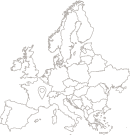Bryophytes
Description
|
|
Bryophytes are plants that are largely unknown but absolutely exceptional. Direct descendants of the first plants to colonise land from the sea, algae, they appeared around 400 million years ago. They live without roots or a vascular system. So they don't use “veins” to transport water and nutrients; they absorb everything directly from their leaves. They are divided into 3 sub-categories: - Mosses (the most well-known): these are composed of an aerial or creeping root like structure and leaf life structures. - Liverworts: some are similar to mosses and have leaf life structures, while others have thallus, a type of flat green leaf. - Hornworts: all have a thallus topped by spores. |
At the lab
Bryophytes were the last plants to have been included among the species studied in the laboratory: 2024.
Bryophytes produce a wide range of volatile compounds. They are characterised by a low degree of structural complexity, which is compensated by a high degree of chemical complexity, including both unique substances and more generally distributed metabolites. We study them for various reasons ↓
Their biochemical interest
Bryophytes have very unique ways to produce certain molecules. These biosynthetic pathways and their products can be valuable and can be used for the development of new drugs, new natural fine chemicals. They also provide new ways to catch carbon and analyse the impact of climate change on an ecosystem, help those ecosystems recover from a disaster, evaluate air quality.
We then aim for the discovery of novel biosynthetic pathways, which later can enable the establishment of novel production platforms that will increase the use of the single molecules through bioengineering. The work is mainly focused on terpenoids, and primarily mono- and sesquiterpenoids. Thus, we continuously biochemically characterize both terpene synthases, cytochrome P450s and other enzymes related to terpenoid biosynthesis.
For the development of bioengineering
Bryophytes transform and produce molecules faster than many other of plants, and can be grown in photo-bioreactors. Our aim is to enhance and maximise the production of specific valued compounds.
Our focus is mainly on the use of Physcomitrium patens as a production host, but also on other mosses thanks to the simple PEG transformation technology and the use of bryophytes that can carry out directed homolog repair to allow targeted integration into the genome. We have, among other things, engineered P. patens to grow faster and also have a higher flux of carbon towards isopentenyl diphosphate (the terpenoid precursor).
|
|
|

 Université Jean Monnet
Université Jean Monnet